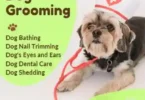Cats have a unique way of communicating their emotions and needs, often using their captivating eyes to express themselves. While a little teary-eyed look can be endearing, excessive tearing or watery eyes in your feline friend may signal an underlying issue that requires attention.
In this blog, we’ll delve into the world of cat watery eyes, exploring the reasons behind excessive tearing and providing insights into effective remedies and care strategies. From understanding the potential causes to implementing solutions, we’ll guide you on how to ensure your cat’s eyes are clear, comfortable, and free from excessive moisture.
Join us on this journey to address one of the most common eye issues in cats, helping your beloved pet enjoy life with bright, dry, and healthy eyes.
Cat Watery Eyes: When Tears Become a Concern
Watery eyes, also known as epiphora, can be a common issue in cats. While some degree of tearing is normal, excessive tearing can indicate an underlying problem that requires attention. In this section, we will explore watery eyes in cats, including the reasons for excessive tearing and potential remedies.
Reasons for Excessive Tearing in Cats
Excessive tearing in cats can occur for various reasons, and identifying the underlying cause is essential for effective treatment. Some common reasons for cat watery eyes include:
- Eye Irritation: Foreign bodies, such as dust, debris, or hair, can irritate the eye’s surface, leading to increased tearing as a protective mechanism.
- Allergies: Cats, like humans, can be allergic to various environmental factors, such as pollen, dust, or certain foods. Allergic reactions can manifest as watery eyes.
- Conjunctivitis: Inflammation of the conjunctiva, the thin membrane covering the eye’s white part and inner eyelids, can cause tearing. Conjunctivitis can be due to infections, allergies, or irritants.
- Blocked Tear Ducts: Blocked tear ducts can prevent tears from draining properly, leading to overflow and watery eyes.
- Corneal Ulcers: Corneal ulcers can cause excessive tearing, along with other symptoms like squinting and eye redness.
- Cat Dental Issues: Dental problems, such as tooth root abscesses, can sometimes lead to cat watery eyes due to referred pain.
- Eyelid Abnormalities: Eyelid abnormalities like entropion (inward rolling of the eyelid) or eyelashes rubbing against the eye can cause irritation and tearing.
- Underlying Health Conditions: Systemic health issues, such as respiratory infections or upper respiratory conditions, can lead to watery eyes as a secondary symptom.
Remedies for Cat Watery Eyes
The treatment of watery eyes in cats depends on the underlying cause. Here are some potential remedies and interventions:
- Eye Examination: If your cat is experiencing excessive tearing, consult with a veterinarian for a thorough eye examination to determine the cause.
- Cleaning: Gently clean around your cat’s eyes with a damp, soft cloth to remove any discharge or debris. Be careful not to touch the eye directly.
- Allergen Management: If allergies are suspected, try to identify and eliminate allergens from your cat’s environment. This might include changing bedding, using air purifiers, or altering their diet under veterinary guidance.
- Medications: Depending on the diagnosis, your vet may prescribe eye drops, ointments, or oral medications to treat infections, reduce inflammation, or manage underlying conditions.
- Surgery: In cases where eyelid abnormalities are the cause of tearing, surgical correction may be necessary to alleviate the issue.
- Tear Duct Flushing: If blocked tear ducts are the problem, your veterinarian may recommend flushing the ducts to remove obstructions.
- Dental Care: Addressing dental issues can sometimes resolve watery eyes associated with referred pain. Regular dental check-ups are essential.
- Complementary Therapies: Some cat owners explore complementary therapies, such as warm compresses or herbal remedies, to soothe eye irritation. Always consult with your vet before trying such remedies.
Remember that watery eyes can be a sign of an underlying medical condition, and self-diagnosis or treatment without professional guidance is not recommended. If your cat’s tearing persists or worsens, or if you notice any other concerning symptoms, consult with your veterinarian promptly. By addressing the underlying cause, you can help alleviate your cat’s discomfort and maintain their eye health.
Using Treats to Administer Eye Medication
When you need your cat to accept medication in their eyes, having a strategy that combines care with a delicious incentive can be incredibly helpful. Here’s how you can make the process smoother:
- Choose an Irresistible Treat: Select a treat that’s not just ordinary but something your cat finds overwhelmingly special. It doesn’t need to be large, but it should have a captivating aroma and taste. Consider options like shaved ham, sardines, shrimp, or even a potato chip.
- Ask About Medication Sensation: Check with your veterinarian if the prescribed medication has the potential to cause discomfort or stinging in your cat’s eyes. If it does, inquire whether you can use artificial tears for a few minutes before administering the medication. This can reduce any unpleasant sensations, making the experience more comfortable for your cat.
Administering Your Cat’s Eye Medication
Proper positioning and technique are crucial for successful medication administration. Here’s how to do it effectively:
- Positioning Your Cat: Begin by holding your cat on your lap, facing away from you. Keep the medication in your dominant hand. Place your dominant hand on the top of your cat’s head, and use your other hand on your cat’s cheek (opposite side of your dominant hand) to create slight tension, which pulls down the lower eyelid, forming a small pocket. Gently squeeze the medication so that it falls into this pocket. Repeat this process with the other eye, reversing hand positions as needed. Always ensure that the hand holding the medication stays in contact with your cat’s head to move with any head movements.
- Alternative Approach: You can also face your cat directly. Hold the medication in your dominant hand, and place your other hand on the opposite side of your cat’s head. Similarly, creates slight tension on the lower eyelid to form a pocket for administering the medication. Maintain contact between the hand holding the medication and your cat’s head.
The goal is to place liquids or ointments in the corner of the eye or within the pocket formed by gently pulling down the eyelid. Avoid aiming for the center of the eye and use the least restraint possible, as cats often dislike being restrained. Keep yourself calm to help keep your cat calm during the process. And, of course, reward your cat with a fantastic treat for their cooperation.
Safety Precautions: Safety First
While these instructions provide guidance, it’s essential to exercise caution when administering medication to your cat’s eyes. The safety of both you and your cat is paramount. We assume no liability for any injuries incurred while following these instructions.
For the Complete Cat Eye Care Guide, you must read all the below-related articles.
| Cat Eye Problems: Causes, Prevention, and Care | Why Is Cat Eye Health Important? Nutrition & Supplements |
| How to Treat & Manage Common Cat Eye Conditions | Cat Eye Infections: What You Need to Know |
Conclusion
In conclusion, understanding the causes of cat watery eyes and knowing how to deal with excessive tearing is essential for your feline companion’s eye health and overall well-being. By identifying and addressing the underlying issues, practicing good eye care, and seeking veterinary guidance when needed, you can help ensure your cat’s eyes stay clear, comfortable, and free from excessive moisture.
FAQs (Frequently Asked Questions)
Why do my cat’s eyes water excessively?
Excessive tearing can result from various causes, including allergies, infections, or blocked tear ducts. It’s essential to identify the underlying issue for effective treatment.
Can I use over-the-counter eye drops for my cat’s watery eyes?
It’s best to consult your veterinarian before using any eye drops or remedies. They can recommend safe and suitable options tailored to your cat’s specific condition.
How can I prevent my cat’s eyes from tearing excessively in the future?
Preventive measures include maintaining a clean environment, addressing allergens, and seeking regular veterinary care to catch and treat eye issues early.




